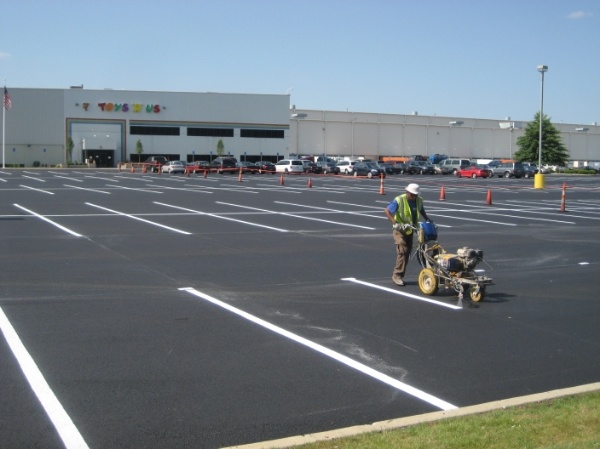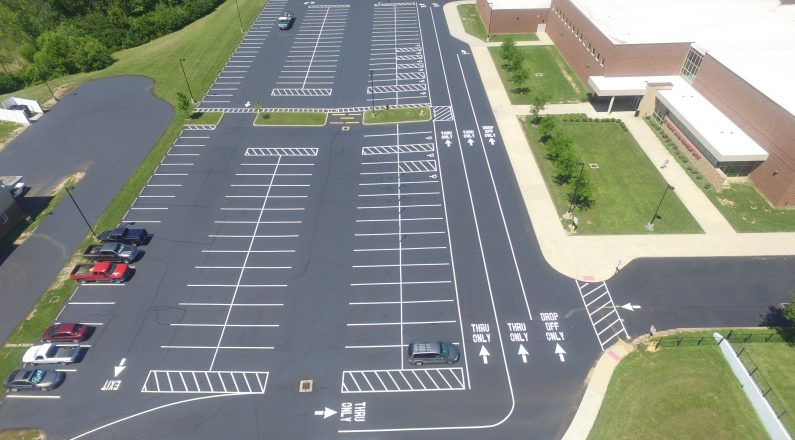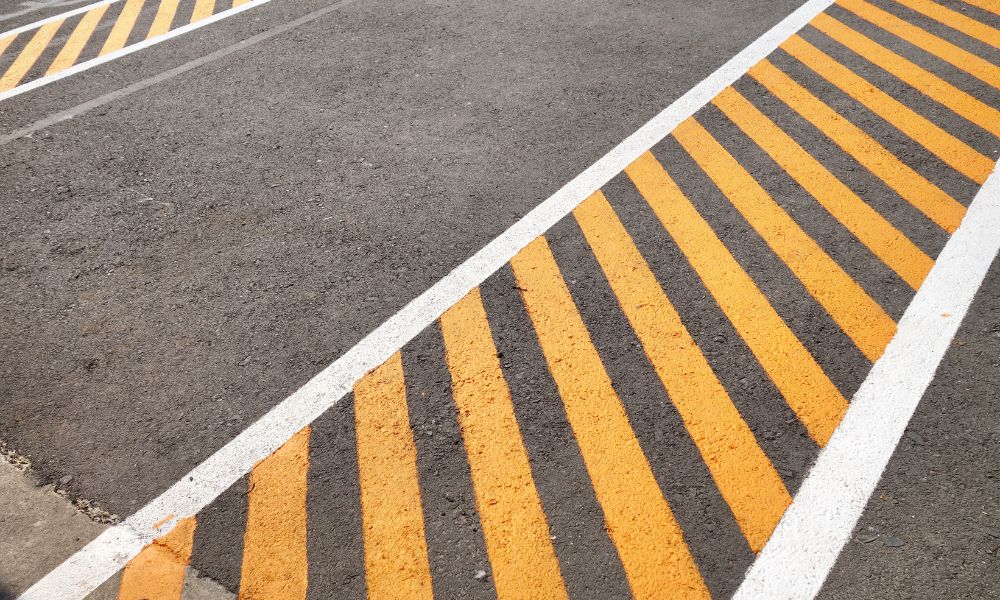A Comprehensive Guide to the most effective Practices in Roadway Paint for Public Highways
Effective roadway paint is a vital component in guaranteeing public security and optimal web traffic circulation on highways. This discussion will explore the most effective techniques in this field, including the choice of suitable materials and advanced application methods. It is vital to take into consideration not just the immediate effect of roadway markings however additionally their long-term maintenance and visibility under differing ecological conditions. Comprehending these elements can dramatically influence the effectiveness of roadway markings, yet several are not aware of the nuances included. As we take into consideration these finest practices, the effects for crash decrease and general roadway functionality will come to be obvious.
Value of Road Paint
Roadway paint plays an important function in preserving web traffic safety and efficiency, with research studies suggesting that well-marked roads can minimize mishaps by up to 30%. The clear distinction of lanes, pedestrian crossings, and other essential markings serves to direct chauffeurs and pedestrians, fostering a foreseeable atmosphere when driving. This predictability is important for effective navigating and assists reduce complication, which can often bring about mishaps.
Additionally, roadway markings contribute in communicating crucial info, such as speed restrictions and directional assistance. They enhance presence, particularly in adverse climate condition or throughout nighttime driving. The existence of reflective products in road paints additionally improves visibility, permitting motorists to determine important markings that influence their behavior on the roadway.

Selecting the Right Materials
Picking proper materials for roadway painting is necessary to attaining resilient and reliable markings. The option of products directly affects the presence, longevity, and safety and security of road markings. Usual options consist of water-based paints, solvent-based paints, and thermoplastic materials, each with distinct buildings and applications.
Water-based paints are ecologically friendly, quick-drying, and suitable for most weather conditions, making them ideal for metropolitan setups. They may call for even more frequent maintenance due to tear and put on. Solvent-based paints, while offering exceptional attachment and sturdiness, can posture environmental and wellness issues as a result of unpredictable organic compounds (VOCs)
Thermoplastic materials are increasingly prominent because of their durability and durable performance. These products are warmed prior to application, enabling a strong bond with the sidewalk. Their reflective buildings enhance exposure, particularly in the evening.
When selecting products, aspects such as traffic volume, climate conditions, and the specific kind of road should be thought about. Carrying out extensive research and consulting with manufacturers can aid ensure that the chosen materials meet regional regulations and standards, ultimately adding to more secure streets and boosted vehicle driver recognition.
Reliable Application Strategies
Reliable application strategies play a crucial duty in making certain that roadway markings achieve ideal performance and longevity. The technique of application considerably affects the adhesion, visibility, and resilience of the markings. High-pressure airless splashing is commonly liked for its efficiency and capacity to create smooth, even lines. This method lessens overspray and makes certain that the paint is used consistently, which is necessary for keeping roadway safety and security.
Before application, it is important to prepare the surface appropriately. This includes cleansing the road of debris, dampness, and oil to improve attachment. Furthermore, temperature level and humidity should be taken into consideration during the application process to accomplish the ideal results.
Utilizing the suitable tools is also important. Line stripers check it out equipped with adjustable sizes permit precise markings that adapt regulatory criteria. Additionally, it is necessary to calibrate the tools consistently to guarantee consistency in paint thickness.
Timing and Environmental Variables
Proper timing and consideration of environmental variables are essential for the effective application of roadway markings. The efficiency of road paint mainly depends on moisture, temperature, and wind problems at the time of application. Preferably, temperatures must be in between 50 ° F and 85 ° F(10 ° C to 29 ° C) for optimum bond and healing. When temperature levels are too low, paint may not treat appropriately, bring about premature wear and decreased exposure.
Moisture degrees additionally play an important role; high humidity can prevent drying out times, while exceedingly dry problems may create rapid dissipation of solvents, affecting the paint's efficiency. Wind can present impurities and debris, potentially endangering the high quality of the markings. It is a good idea to choose calm days for application.

In addition, thinking about seasonal variants is crucial. Roadway painting throughout damp periods might lead to washouts, while extreme warm can create paint to blister. Setting up painting tasks throughout positive climate problems can considerably improve the durability and efficiency of road markings. By thoroughly examining these factors, companies can ensure that roadway markings are applied successfully and maintain their exposure and toughness with time.
Maintenance and Durability Strategies

One reliable technique is to implement an organized painting program based on website traffic volume and ecological aspects - Road painting near me. Greater website traffic areas may require more frequent upkeep to counteract the erosive effects of vehicles and weather. Furthermore, making use of durable products, such as thermoplastic and epoxy paints, can considerably extend the life expectancy of roadway markings
Cleaning roadway surface areas to get rid of particles and contaminants is one more important facet of upkeep. This guarantees ideal bond of new paint and improves the general effectiveness of the markings. Moreover, using innovative modern technologies, such as automatic tracking systems, can improve the monitoring process and optimize upkeep routines.
Incorporating these methods will not only improve the presence and security of road markings however also minimize long-term expenses related to constant repainting and repair work. (Road painting services)
Conclusion
View Line painting Abbotsford in a full screen map
The selection of suitable products, incorporated with effective application strategies and factor to consider of ecological aspects, adds to the sturdiness and exposure of road markings. Regular maintenance and assessments further prolong the life-span of these markings, eventually reducing mishaps and boosting overall roadway use.
The existence of reflective products in road paints further boosts visibility, allowing motorists to determine important markings that affect their habits on the road.
Choosing proper products for road paint is crucial to achieving reliable and durable markings.While the preliminary application of road markings is important, ongoing maintenance strategies are similarly essential to guarantee their durability and exposure. Additionally, the use of sturdy materials, such as polycarbonate and epoxy paints, can dramatically prolong the lifespan of roadway markings.
The selection of proper products, Pavement marking combined with efficient application methods and factor to consider of environmental aspects, adds to the resilience and exposure of roadway markings.